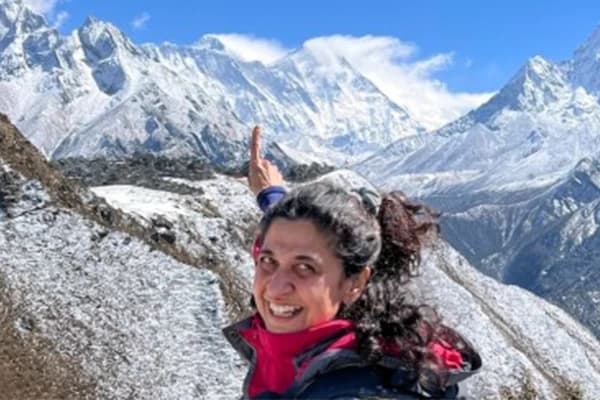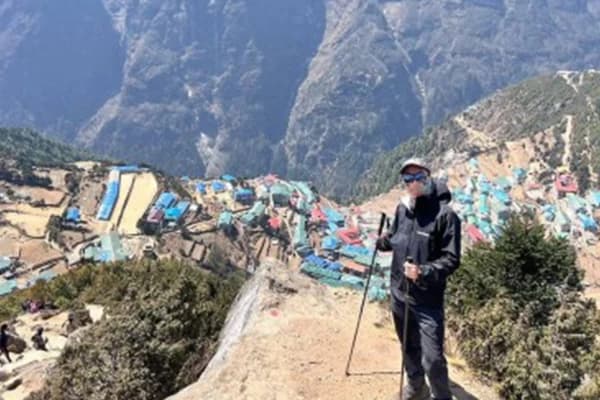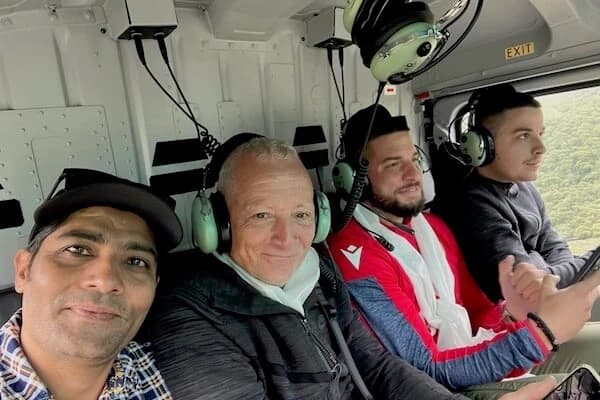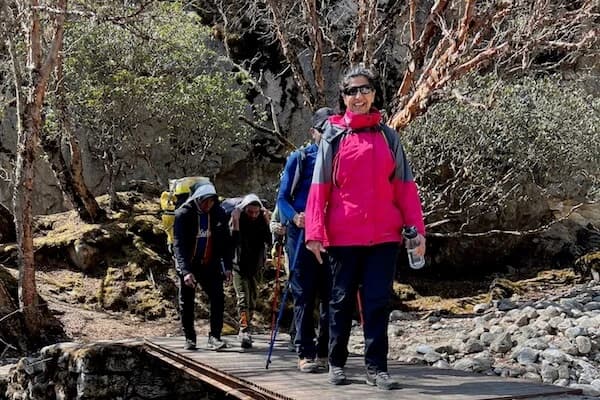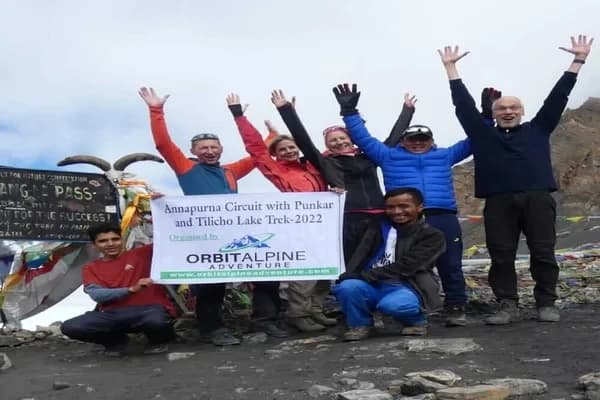The green valley floors turn to the plain, rough land of the high Himalayas as the trek comes closer. The path rises over hill passes via Tengboche with its well-known monastery and keeps going up further into the glacial valleys of Dingboche and Lobuche, finally ending at the Everest Base Camp, where the Khumbu Icefall is visible to have a distant impression of Mount Everest.

Though it's a short trek, the struggle level remains the same: everybody needs a fit body and perfect mental strength. Well, the payback is big: heavenly mountain-top landscapes, a deep understanding of the Sherpa culture, and, of course, the ever-glorious feeling of achieving something like Everest Base Camp. Here is the complete guide to prepare you with the necessary information for a safe and memorable adventure on this Everest Base Camp Short Trek.
Overview of the Trek to Everest Base Camp
What is the Trek to Everest Base Camp Mini?
The Everest Base Camp Short Trek is reduced and is made shorter in duration than the former or original EBC trek. The same trip planned shall be covering the same number of miles as the classic trek but with fewer, if not the least, days to undertake, usually between 8-10 days. Well, it is run on the same path and offers trekkers the grand views of Mount Everest, along with other towering peaks that include Lhotse, Nuptse, and Ama Dablam.
Who Is It For?
This is the trip for you if:
- Someone who doesn't have two weeks to spare but still wants to reach Everest Base Camp.
- A person who has prior experience in trekking can rebuild his physical form to cope with the faster pace.
- A person who gets himself adjusted very easily to the high altitude has the least number of adaptation days.
Key Highlights
- It ends with the triumphant reach of Everest Base Camp, which is located at a height of 5,364 meters, 17,598 feet.
- The neighboring sight from Kala Patthar of Mt. Everest
- Visit the famous Tengboche Monastery
- Introduction to Sherpa cultures and their villages that embrace Namche Bazaar
- Walk among the remarkable areas that institute the Khumbu Valley
Everest Base Camp Short Trek Itinerary
9-day Everest Base Camp Short Trek here is a complete itinerary. The Everest Base Camp is in much a shorter time frame, this timetable is well-balanced between acclimatization needs and desire to reach.
Day 1: Flight to Lukla and Trek to Namche Bazaar
The Everest region entry, located at a height of about 9,350 ft. from Kathmandu, will fly to Lukla. Your flight offers you a superb view of the Himalayas. On arrival, you meet your porter and begin your walk down to Phakding. Your path goes through exhilarating villages, fields, and forests beside the banks of the Dudh Koshi River. It's a moderately easy walk and designed to help you adjust at this altitude.
Following the banks of Dudh Koshi River, cross many of its streams before taking on the final 200m climb up stiff hill to Namche. Then steady steps path as you move higher to Namche Bazaar, one of the leading trading hubs of the Khumbu region. You will get your first sights of Everest and its nearby peaks on the drive today.
Overnight: Namche Bazaar.
Day 2: Namche Bazaar Acclimatization Day
To regulate your body to trek in elevation you need an adjustment day. Hike easily to the Everest View Hotel at 3,880 meters or 12,729 feet for excellent sights of Everest, Lhotse, and Ama Dablam. On the other hand, strike out for the local village of Khumjung, where you visit the Hillary School and the Khumjung Monastery, which houses the scalp of a Yeti. After lunch, have some free time to explore the shops, cafes, and markets of Namche Bazaar.
Day 3: Trek to Tengboche
Well, the path for today is one of the most attractive of the entire trek. A walk out of Namche begins with a zigzagging climb, then comparatively levels you for a flat trail with vivid scenery of Everest, Lhotse, and Ama Dablam. Passing the Imja Khola River, you will climb steeply to reach the lovely hilltop settlement named Tengboche. You will get to visit one of the major monasteries in the whole of the Khumbu region known as the very famous Tengboche Monastery and enjoy the peaceful mountain settings.
Overnight: Basic teahouse.
Day 4: Tengboche to Dingboche
From Tengboche, start downhill through forests, cross the Imja Khola again, and then climb, progressively at first, through the village of Pangboche to fine views of Ama Dablam. From there, the trail to Dingboche becomes gradually rougher and more barren, with fewer trees and more open ground. Still, the scene from Dingboche is attractive, with a pretty village and its stone-walled fields and excellent views of Lhotse, Island Peak, and Ama Dablam.
Overnight: Dingboche.
Day 5: Lobuche (4,940 meters height)
Early in the morning, we will start our journey from Dingboche to Lobuche. This is the calmest of the hikes up to Lobuche, although it walks through some very melodramatic scenery: you climb up and over the Thukla Pass, past the memorials of climbers who have died on Everest, from where the trail steepens as you rise through the moraine of the Khumbu Glacier. On arrival in Lobuche, you will be contained by large peaks including Pumori, Khumbutse, and Lingtren.
Overnight stay: Lobuche.
Day 6: Trek to Everest Base Camp and Return to Gorak Shep
This is without a doubt the most awaited day of the trekking period. Begin the day early in the morning and walk up to Gorak Shep – this is the uppermost settlement altitude-wise before the final push rising up the final bounce leading to Everest Base Camp. From here, the journey to Everest Base Camp shall take you past its rocky, glacial moraine. Once at Everest Base Camp, you shall have a view offered of Khumbu Icefall and the peaks nearby it. You will spend some time at Base Camp before returning to Gorak Shep for the night stay.
Overnight stay: Gorak Shep.
Day 7: Hike over to Namche Bazaar
Incline this morning back to Namche Bazaar via Pangboche and Tengboche. The path gives one last view of the Khumbu Valley and the high peaks towards it. You can enjoy some easing upon reaching Namche, grab the chance to shop for some mementos, and take a well-deserved hot shower in one of the many lodges.
Overnight: Namche Bazaar
Day 8: Trek to Lukla
Re-trace the same path and descend steeply dipping through the dense forest and passing small villages. Upon returning to Lukla, celebrate the journey with your guide and porter. Take your time looking back at your journey and enjoy your last evening at the mountain.
Overnight: Lukla.
Day 9: Fly Back to Kathmandu
Early in the morning, you will be flying back to Kathmandu. You will check into the hotel and enjoy the rest of your day at leisure. Alternatively, you may visit either the historical place within Kathmandu City or the cultural heritage sites; Swayambhunath Stupa/ Monkey Temple, Boudhanath Stupa, or Durbar Square.
Overnight: Kathmandu

Preparation and Packing List for EBC Short Trek
Physical Preparation
-
Cardiovascular training: This training is necessary to be in a position to run, cycle, or swim for quite long distances.
-
Strength training: The muscles in our legs are essential, and shoulders should be developed in a position to bear the probable load from the trek.
-
Hiking experience: Hike with a backpack in similar rough conditions to at least put on the journey.
-
Altitude acclimatization: Whenever possible, station at those high altitudes in preparation for the trek.
Required Equipment
- Trekking Boots: Boots with these qualities are important: durable, waterproof, and well broken-in.
- Clothing layers: Moisture-wicking base layers, shielding mid-layers, waterproof outer layers.
- Trekking poles: Stabilizers; relieve knees of much of the stress of downhill walking.
- Sleeping bag: A warm sleeping bag rated to at least -15°C / 5°F
- Backpack: 40–50-liter pack with rain cover.
- Water purification: Tablets or portable filter (ensure drinking water is safe)
- Headlamp: For early morning treks and in-house lodge use.
- Sunglasses and sunscreen: Protection against harsh UV rays at high altitudes.
- First aid kit: Altitude sickness, band-aids, swelling treatment, pain relievers.
Permits and Documentation
- Sagarmatha National Park Permit: To be allowed entrance into the national park.
- TIMS Card: Trekkers' Information Management System card for trekking in Nepal.
- Travel Insurance: Should cover Trekking in the high altitudes and Helicopter Evacuation.
Best Time to EBC Short Trek
- Autumn (September to November): Best visibility due to clear skies, and temperate climate.
- Spring: Rhododendrons in full bloom, rising temperatures, and steady weather. The winter months are from December to February, which essentially means cold temperatures and fewer trekkers; at higher rises, snow is a possibility.
- Monsoon: June to August, not suggested due to heavy rain, clouds, and the paths becoming slippery.
Everest Base Camp Short Trek Difficulties and Considerations
Despite the gratifying experience, EBC Short Trek has a share of challenges that trekkers must know before undertaking. Knowledge of these challenges and homework to counter them guarantees a safe and successful trek.
Altitude and Acclimatization
Challenge: The climb reaches high altitude very fast, with Everest Base Camp itself at 5,364 meters (17,598 feet). The air is thin in this altitude, and the oxygen levels are very low. Hence, people are prone to Acute Mountain Sickness.
Consideration: Proper acclimatization is essential. The itinerary incorporates the days of acclimatization, but you have to listen to your body and know the symptoms of AMS: headache, nausea, dizziness, and shortness of breath. If your symptoms worsen, you should immediately descend.
Physical fitness
Challenge: Long days of walking, steep ascents, and challenging ground require a good level of physical fitness. The short trek compresses the distance into fewer days; there is less time to recover between the hard days.
Preparing: Months before the start of the trek, explorers should follow a good, severe fitness regime. A regime such as this would include cardio, strength training, and stamina exercises. This regime also helps your body get used to the uneven land and high altitudes while trekking.
Weather Conditions
Challenge: The Himalayas are known for their changeable weather conditions. The weather can turn bad within minutes, dropping temperatures at nightfall and at higher altitudes, with snow, rain, and strong winds even during so-called the trekking seasons.
Contingency: Obtain appropriate equipment to deal with the notions of the weather. This should include extra warm clothes, a down jacket, waterproof clothing, and a good sleeping bag. Always check for the forecast and adjust the itinerary as required.

Logistical and Travel Problems
Challenge: The trek starts with a flight to Lukla. This is an honestly challenging airfield to land at and, weather allowing, may cause delays or even cancellations, which can delay your schedule and, thereby, affect the complete experience of trekking.
Contemplation: Build in some extra days into your timetable to allow for delays, especially with international flights. Purchase trip insurance that includes flight cancellations and delays. Be ultra-patient and maintain a flexible attitude.
Housing and Food
Challenge: Accommodation during the journey is basic, while higher up the altitudes, it's very basic. Accommodations can include shared facilities, and hot water in such accommodations. The meals are basic, and the variety drops with altitude.
Consideration: Don't expect to be spoiled. Be prepared for very simple living conditions with few facilities, and bring some snacks or energy bars if you like having options. Keeping hydrated is very important, so drink plenty of fluids and not too much alcohol.
Health Risks
Risks: Other health risks beyond altitude sickness include dehydration, hypothermia, frostbite, and gastrointestinal diseases from foreign food and water.
Reflection: Drink boiled or filtered water and eat thoroughly cooked food.
Contemplate: Consume boiled or purified water and well-cooked food. Confirm adequate personal hygiene and carry a first-aid box including all the medical necessities, including the prescribed medicines and Diamox for the prevention of altitude sickness.
Mental Toughness
Challenge: It's a hard mental trek that requires strength and willpower. This is easily devastated by physical fatigue, altitude impact, and uncooperative weather.
Contemplation: Mental preparation is as important as physical training. Be positive, set your goal one at a time, and achieve it. Morale can only be improved with the help of your guide, porters, or fellow group members.
Hiring a Professional Guide and Porter
Why Hire a Guide?
- Navigation: Guides know the route, which becomes very important in case of bad weather or changes in the path.
- Cultural insight: They inform you about local culture, traditions, and the environment.
- Safety: Guides are trained for first-aid and altitude sickness management.
Why Hire a Porter?
- Reduce load: It lets a porter carry your heavy backpack, freeing you to focus on the trek.
- Support the local economy: Hiring a porter contributes to the livelihoods of the local people.
Costs
- Guide: $25-$30 a day, including their food and accommodation.
- Porter: $15-$20 a day, including their food and accommodation.
- Tipping: The guide and the porter will expect to be tipped after the trek.
Environmental and Cultural Etiquette
Leave No Trace
- Disposal of refuse: Carrying out all non-biodegradable trash, including plastic bottles and wrappers.
- Water sources: Leaving streams and rivers in their natural state, without pollution, since they serve as drinking water sources for the locals.
Respect Local Culture
- Monasteries and temples: Do not forget to remove your shoes and hats when entering. Walk around religious places always in a clockwise manner.
- Photography: Take previous permission to click a picture of people especially when you are in remote villages.
- Dress code: One has to wear a decent dress and cover the shoulders and knees primarily at the time of visiting any religious places.
Responsible Tourism
- Purchase from the local market: Try to purchase goods and services of the local community.
- Exchange of culture: Do interact with the local people, learn a few phases of Nepali and respect their culture.
Conclusion of Everest Base Camp Short Trek
One of the most amusing trekking places in the world. With proper training, fair fitness, and expert guidance, it allows explorers to come across various wonders of the Himalayas as well as the culture of the Sherpa people within a limited time frame. This short trek to Everest Base Camp is going to be such a journey from which you will take lifelong memories back home. Whether you are an experienced trekker or a beginner, with proper preparation, fair fitness, and expert supervision you can complete this journey.
Everest Base Camp Short Trek FAQs
1. How many days is the Everest Base Camp Short Trek?
The Everest Base Camp Short Trek is done in 8 to 10 days depending on the individual's pace. This stands as a shorter version than that of a standard 12–14-day trek.
2. What is the best time to do the Everest Base Camp Short Trek?
The best times are the pre-monsoon, March to May, and post-monsoon, September to November seasons. These offer the best weather and mountain visibility.
3. Is the Everest Base Camp Short Trek suitable for beginners?
For a beginner with the capability of handling the technical aspects of trekking, it will not be difficult to do the trek. As it is strenuous in comparison due to its quick pace and altitude, the trek is recommended for experienced trekkers.
4. What type of physical training should we do?
Cardiovascular training, strength exercises, and hiking practice are a must. Stamina building, especially for the long days of the trek, and getting used to wearing a backpack on your back.
5. What is the accommodation like on the trek?
Accommodation takes place in tea houses which are very simple lodges with food and bed. The denser one gets, the more limited facilities can be, with areas built on the roof of the house.
6. What should I do if I get altitude sickness?
You can prevent altitude sickness by acclimatizing, keeping rehydrated, and climbing higher very gradually. It is always important to recognize the symptoms and descend early. Taking medicines such as Diamox can also help.
7. Will I need a guide and a porter for the trek?
While one can trek independently, a hired guide and porter will ensure more safety, accuracy in route following, and rich cultural insights. A guide can help out in times of emergency also.
8. Which permits are needed for the trek?
You need a Sagarmatha National Park Permit and the TIMS card. Both these can be availed in Kathmandu or through a trekking agency.
9. What are the costs associated with the Everest Base Camp Short Trek?
It is going to be around $1,200 to $2,000 for guiding fees or/and porter, accommodation, food, permits, transportation; this does not include international flights.
10. What to bring for the trek?
Required Gear The gear should contain at least the following: climbing boots, warm clothing layers, sleeping bag, backpack, water purification tablets, first-aid kit, headlamp. "Pack light, but bring everything you need.".





